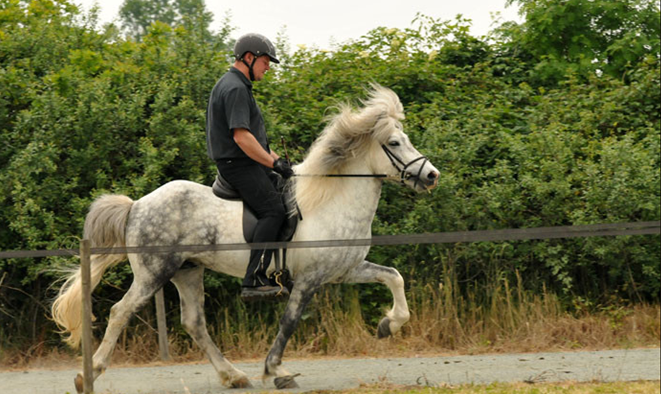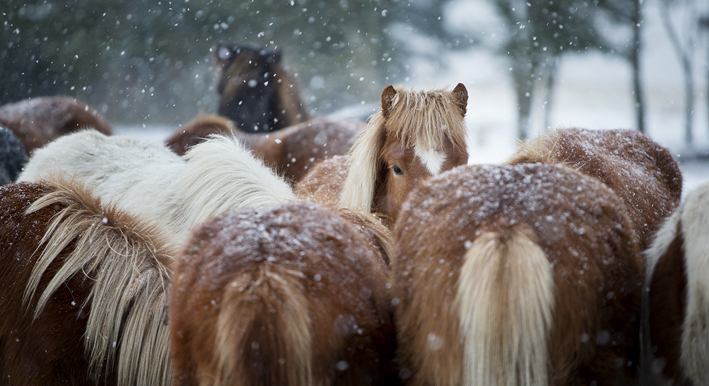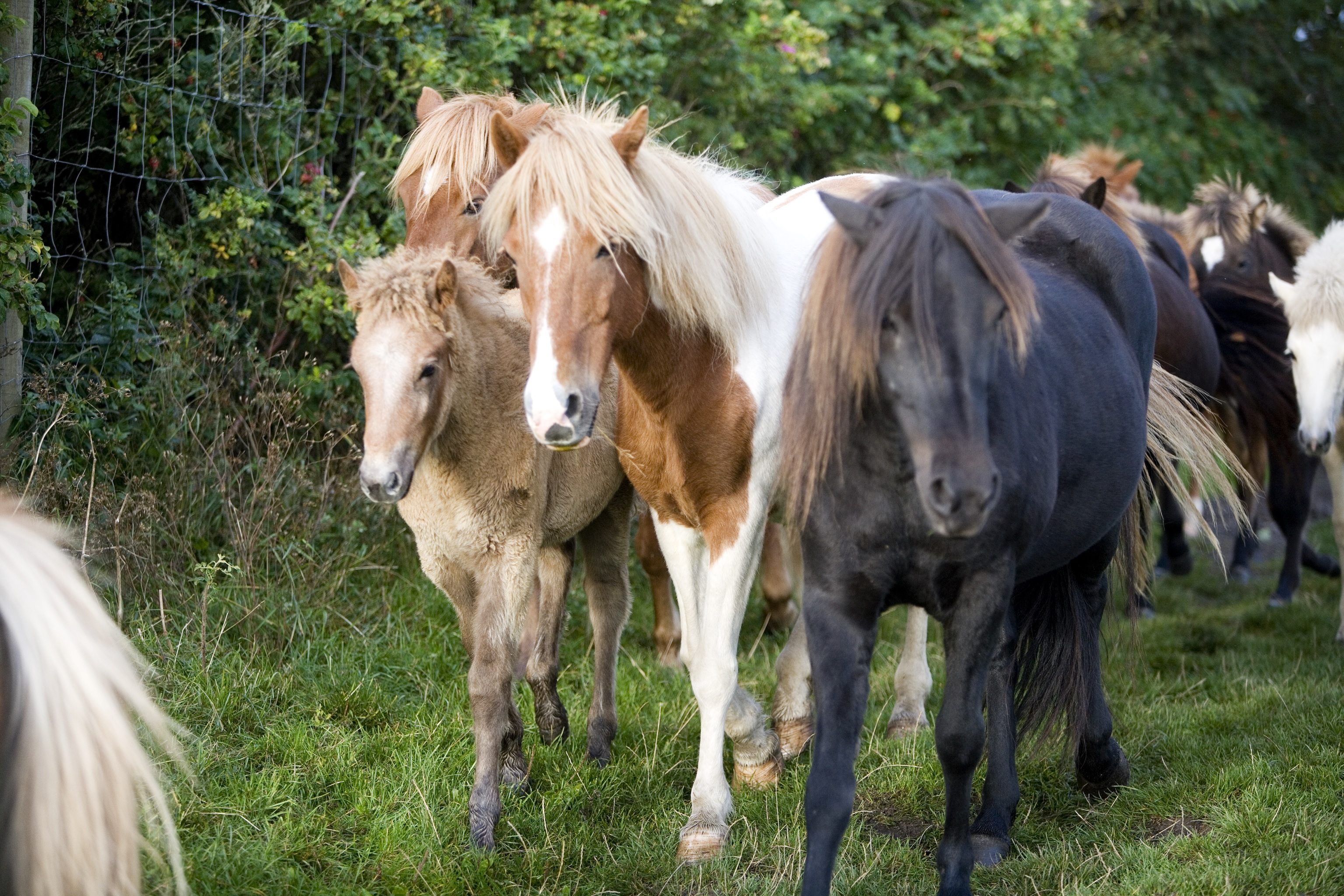The Icelandic horses come from the horses that the Vikings brought with them when they settled in Iceland more than 1100 years ago. No horses have been imported into Iceland since the Viking Age. That is why, in this unique horse race, we have the Nordic region's own original thoroughbred in the form of the strong, small töltere.
The nature that the horses have lived in over the centuries has made them healthy and hardy, and the demands of Icelanders for a versatile transport animal in the unroadsible terrain have created an exceptionally reliable, strong and comfortable riding horse, incredibly safe on their feet and with plenty of temperament and running will.
The Icelandic horse is primarily a farmhorse, with the greatest emphasis being placed on good riding characteristics. It must be courageous and independent, willing and cooperative. It must be easy to hold and must have good adaptability and, above all, a good mind.
All colours, markings and colour combinations are permitted, even welcome.
It is the horse's gaits that, more than anything else, have paved the way for the success of icelandic horses in recent years in most of Europe and North America.
In addition to the three basic species, which all horse breeds are supposed to master step, trot and gallop, Icelandic horses have facilities for two more gaits: tölt and pas.



The Icelandic horse has 5 gaits.
Step is a four-stroke gait where the horse goes. Steps are the only gait that is not elastic because the legs support the substrate longer than they hover.
Trotting is a two-stroke gait for a horse. The diagonal pairs of legs are put down and lifted up at the same time. Between each diagonal leg pair's descent, the horse floats briefly. This gives the trot four elements. The main requirement for the trot is that the diagonal leg movements are regular and straight.
Tölt is a four-pin gait with the same leg movement order as in steps: right hind leg, right front leg, left hind leg and left foreleg. The horse always has one or two legs in the ground, where in steps it always has two or three legs in the ground. There is no float, and that makes the gait incredibly comfortable for the rider.
Gallop is the fastest of these. The horse has one side's front and hind legs in front of the other side's legs and lifts all legs at the same time, leaving the horse in no contact with the ground for a moment.
Pas is a two-stroke gait where the horse moves the front and hind legs on the same side simultaneously – and with a long hovering phase before the next pair of legs hits the ground. That's why the gait is called flying passports. The speed is about 40 km/hour and rides over short stretches.
Terms of Business - Aktivities